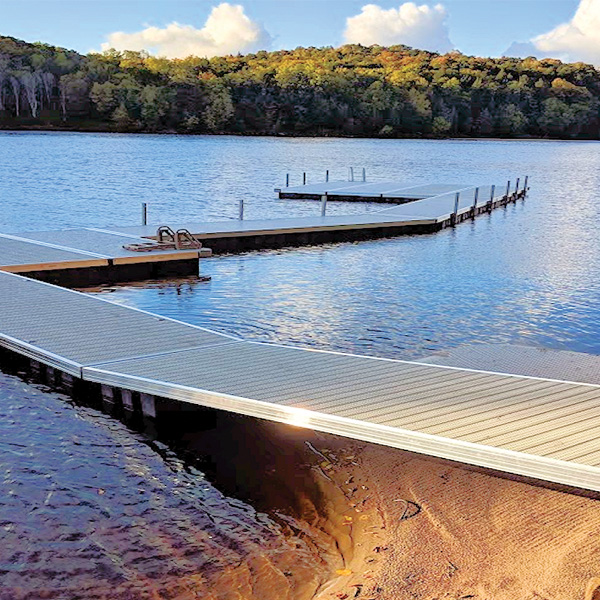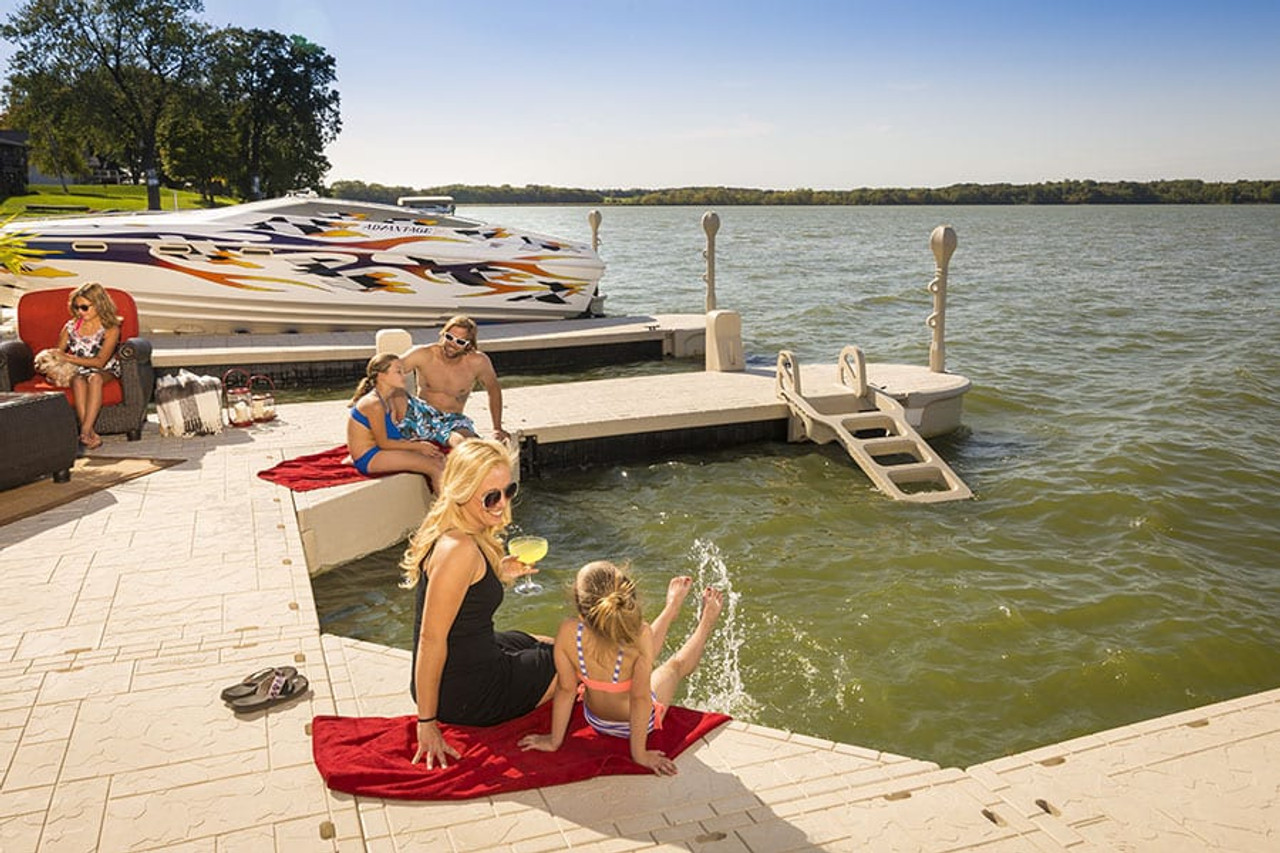Innovative Floating Docks: The Future of Beachfront Gain Access To and Leisure
Innovative Floating Docks: The Future of Beachfront Gain Access To and Leisure
Blog Article
Upgrade Your Waterside With Sturdy Floating Docks
Upgrading your beachfront with durable floating docks can substantially enhance both performance and aesthetics, supplying a flexible service for different water activities. With an array of products offered, including low-maintenance choices and conventional wood, picking the best dock can complement your personal style and meet sensible demands.
Benefits of Floating Docks
Floating docks deal a multitude of benefits that enhance their appeal for numerous maritime applications. Among the primary advantages is their flexibility to transforming water degrees - floating dock company. Unlike traditional fixed docks, floating docks fluctuate with the trend, making sure constant ease of access for boats and watercraft despite environmental problems. This function dramatically decreases the threat of damage to vessels, as they remain securely tied even during fluctuations in water depth.
Additionally, floating docks are much easier to install and transfer, offering flexibility for momentary or seasonal use. Their modular style enables modification to fit particular needs, whether for personal marinas, domestic waterfronts, or business applications.
Additionally, floating docks produce very little disturbance to the marine setting, protecting neighborhood ecological communities and lowering the possibility of disintegration. They also give boosted security and stability for users, as their resilient nature uses an extra forgiving surface area than stiff frameworks.
In addition, floating docks can assist in a varied series of tasks, such as angling, swimming, and recreational boating, making them an important possession for waterside advancement. Their convenience and functionality make floating docks a preferred selection for a variety of naval tasks.
Choosing the Right Products
Selecting proper products for floating docks is essential to their longevity, efficiency, and general efficiency. When selecting products, think about elements such as environmental exposure, upkeep needs, and structural integrity. Usual materials consist of wood, plastic, aluminum, and composite alternatives, each offering unique advantages and downsides.
Timber, while cosmetically pleasing, calls for normal maintenance to stop rot and degeneration. Pressure-treated wood can boost toughness, however it may still surrender to water damage over time. Plastic drifts, frequently made from high-density polyethylene, are resistant to rust and need marginal upkeep, making them an attractive selection for low-maintenance applications.
Light weight aluminum is another sensible choice, understood for its stamina and lightweight buildings. It is resistant to rust and can stand up to harsh climate condition, although it might be more expensive than other products. Compound materials incorporate the ideal characteristics of timber and plastic, offering a low-maintenance and resilient alternative that simulates the appearance of wood without the associated disadvantages.
Inevitably, the choice of product need to align with the planned usage, environmental factors to consider, and budget restraints, making sure a durable and practical floating dock that meets your details demands.
Installment Process Overview
The successful installment of a you could check here drifting dock relies upon mindful review preparation and implementation, ensuring that it operates successfully in its designated environment. The initial step includes examining website conditions, consisting of water depth, coastline functions, and prevailing climate patterns, which will certainly inform the dock style and anchoring system.
Complying with the website analysis, the following stage is to prepare the floating dock parts. This consists of putting together the structure, protecting floats, and attaching any essential equipment. It is important to guarantee that all links are waterproof and durable to withstand marine conditions.
As soon as the dock is put together, the installment process starts with placing the dock in the water. This can entail a crane or other lifting tools, particularly for bigger structures. Proper alignment is vital for performance and safety.

Maintenance Tips for Longevity
Routine upkeep is crucial for making sure the durability and ideal performance of a floating dock. To accomplish this, start with routine evaluations at the very least two times a year, concentrating on the integrity of the dock's structure, consisting of the flotation protection devices and attaching equipment. Seek signs of damage, corrosion, or wear, and deal with any concerns quickly site to avoid further wear and tear.
Cleansing is one more critical aspect of maintenance. Remove particles, algae, and barnacles from the dock's surface to avoid unsafe conditions and maintain visual appeal. Use a light cleaning agent and a soft brush to avoid harming the dock's products.
Furthermore, guarantee that the dock is effectively secured and protected to endure seasonal changes in water degrees and weather. Inspect the anchoring system for security and make modifications as necessary.
Enhancing Your Exterior Visual
To create an aesthetically appealing exterior room, integrating a floating dock can dramatically improve the total aesthetic of your waterfront residential property. Floating docks are not only useful yet can likewise act as a striking prime focus that matches the natural surroundings - floating docks. Readily available in various materials and designs, these docks can be tailored to match your home's architectural style and landscape
The addition of attractive components, such as integrated illumination or elegant barriers, further elevates the dock's aesthetic allure. Take into consideration utilizing natural timber finishes, which mix effortlessly with the environment, or going with modern-day materials like light weight aluminum or composite decking that offer a sleek, modern appearance.
Tactically placing planters or seating locations on or around the dock can create inviting spaces that encourage relaxation and enjoyment of waterfront sights. In addition, incorporating shades and structures that harmonize with your landscape will produce a cohesive visual throughout your exterior area.

Final Thought

Upgrading your waterside with durable floating docks can significantly improve both functionality and aesthetic appeals, providing a flexible remedy for various water tasks. Unlike typical fixed docks, floating docks rise and fall with the trend, guaranteeing constant availability for boats and boat no matter of environmental conditions.Choosing proper materials for floating docks is vital to their longevity, performance, and total effectiveness.Once the dock is set up, the setup process starts with placing the dock in the water.In recap, floating docks offer various advantages, including flexibility to water level changes and a selection of product choices.
Report this page